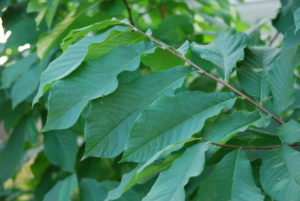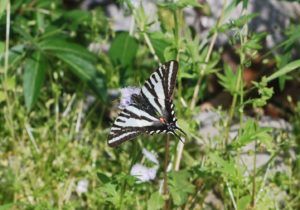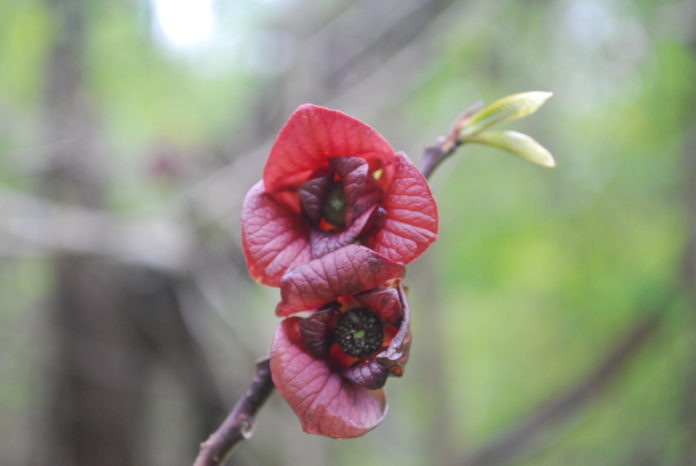By Larry Cornelis – President, Sydenham Field Naturalists
Well, okay, maybe that’s a bit of a stretch.
But this local understory tree is known as the Arkansas Banana and the Michigan Banana so why not the Ontario Banana?
The tree I’m writing about is the Pawpaw (Asimina triloba).
A small shade-tolerant tree found in bottomlands and river valleys with moist fertile alluvial soils (often clay).

The genus name, ‘Asimina’ is derived from the Native American Arsimin and alkaloids in the tree are derived from that name too (asiminine, anaboline).
The species name ‘triloba’ refers to the three flower petals.
Pawpaw has always been a rare tree growing in the Carolinian Life zone.
To me, this is one of our most tropical looking trees and it does range into the subtropics and is in the Custard Apple family of tropical trees.
Most people have no idea that we have a sub-tropical tree growing in Southwestern Ontario, and a visit to an understory pawpaw grove is like a trip to the deep south.
This is possible at some local nature reserves (such as Wallaceburg Pawpaw Woods).
The sometimes-used common name of ‘Banana’ is in reference to the fruit, which is oblong, up to 4” or 5”
and yellow fleshed.
The flavour, either liked or not (I enjoy it, my wife not) is a banana-mango-melon weird combination.
There are large seeds in the fruit which is technically a berry.
Pawpaw fruit is nutritious and high in protein.
Good for you but do not eat any of the skin or you will be running to the white throne.
Enough said.
In his book, ‘Trees of the Carolinian Forest’, Gerry Waldron states that our Ontario Pawpaws are typically the tasty dark yellow fleshed fruits (although I have recently been told of less tasty whiter fruited specimens in Essex County) which suggests dispersal by the First Nations Peoples.
It is also thought that American soldiers brought them up during the American Revolution and the War of 1812.

However they landed here, I’m glad they did.
I have three in my home landscape.
Pawpaw’s ecological values are somewhat limited/low.
Only one species of butterfly has evolved to use it as a host plant for its caterpillars, the Zebra Swallowtail butterfly.
This is a strikingly beautiful species which once had a breeding colony near Harrow, Ontario.
Of course, the fruit is eaten by small mammals and some birds, often before they are ripe enough for you and me.
Pawpaw flowers are self-incompatible so you should have two or three or more trees to get good cross-pollination and fruit development.
Although I do know of a single specimen which the owner allows me to gather/pick two or three grocery bags full of fruit every September.
I’ve planted numerous trees that flower but don’t produce fruit.
The flowers are a dark blood red, three to four cm across and develop before the leaves emerge.
Not showy from a distance but incredibly interesting/pretty up close.
The dark red colour and the flowers associated off smell attract pollinators looking for carrion such as flies and beetles.
As I previously mentioned, this is an understory tree which forms groves or thickets and typically all the trees are genetically identical, growing from the same root system.
My trees (which were 60 cm tall when planted five years ago and five metres tall now) have started to sucker and form a colony.
If a Pawpaw was growing in a mowed turf area, you would never know the tree was trying to form a colony.
The largest single specimen in Ontario is 28 cm in diameter and eight metres tall and the champion Pawpaw in
Michigan is the same diameter but much taller at 14.6 m.
They are a unique native tree for the home landscape or restoration project in sun or shade.
For more details, visit: http://www.sydenhamfieldnaturalists.ca/
















